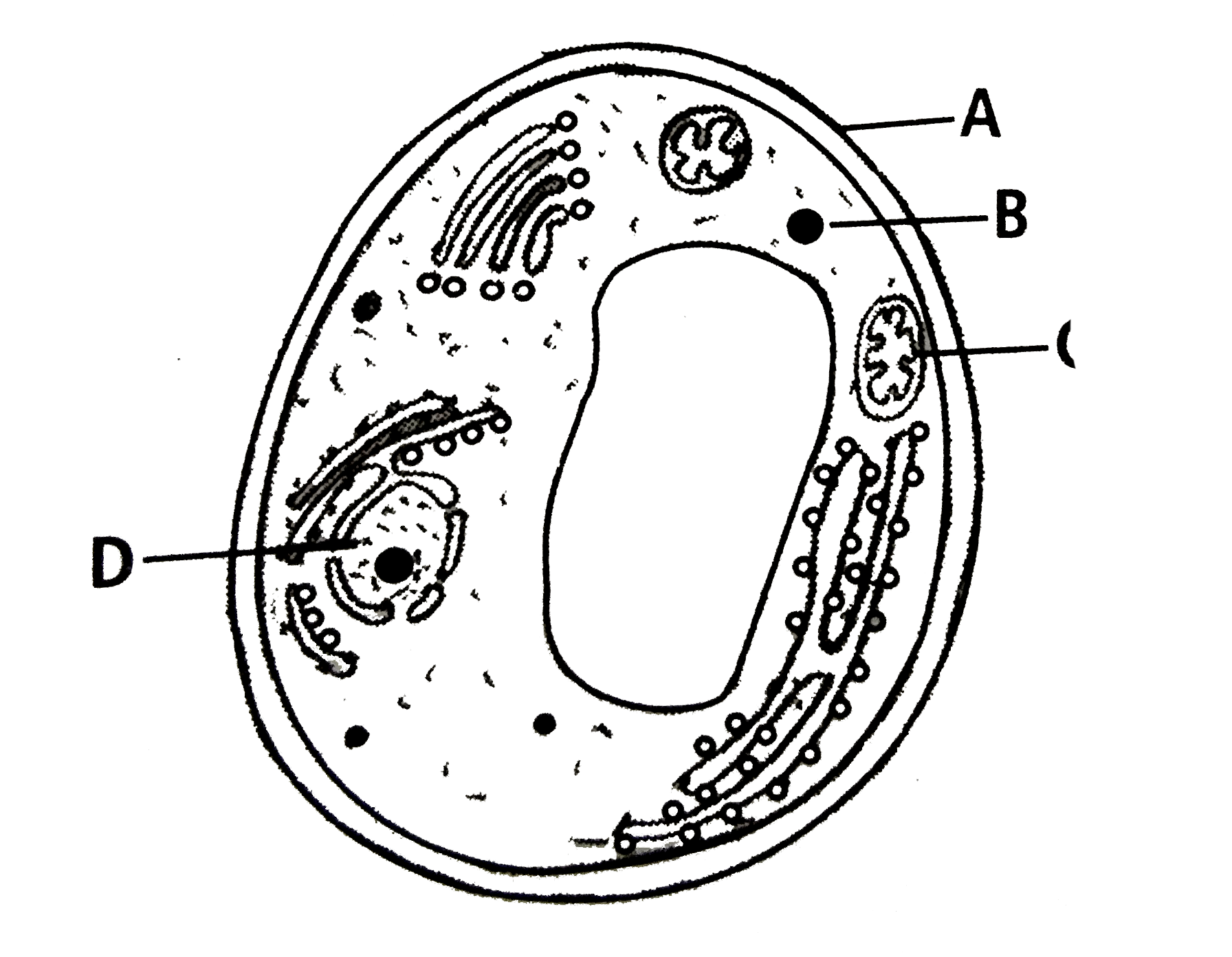Mark the odd one (w.r.t. fungi)
(a) Unicisternal Golgi bodies
(b) Show a great diversity in morphology and habitat
(c) Most of the members are aquatic
(d) Reverse food material is stored in the form of oil and glycogen
Unicistemal golgi bodies
Show a great diversity in morphology and habitat
Most of the members are aquatic
Reverse fodd material is stored in the form of oil and glycogen
The correct Answer is:C
To solve the question of identifying the odd one out with respect to fungi, we will analyze each option step by step.
1. Analyze Option A: Unicisternal Golgi bodies
- Fungi typically have unicisternal Golgi bodies, meaning they possess a single cistern in their Golgi apparatus. This is a characteristic feature of fungi.
2. Analyze Option B: Show a great diversity in morphology and habitat
- Fungi are known for their vast diversity in both morphology (shape and structure) and habitat (where they live). This statement is true for fungi.
3. Analyze Option C: Most of the members are aquatic
- While some fungi can be found in aquatic environments, the majority of fungi are not aquatic. They typically thrive in moist terrestrial environments. This statement is misleading and does not accurately represent the majority of fungi.
4. Analyze Option D: Reserve food material is stored in the form of oil and glycogen
- Fungi store their reserve food primarily in the form of glycogen, and some may also store oils. This statement is true for fungi.
Conclusion:
After analyzing all the options, the odd one out is Option C: Most of the members are aquatic, as this does not accurately describe the majority of fungi.
Final Answer:
C. Most of the members are aquatic
---
- Fungi typically have unicisternal Golgi bodies, meaning they possess a single cistern in their Golgi apparatus. This is a characteristic feature of fungi.
- Fungi are known for their vast diversity in both morphology (shape and structure) and habitat (where they live). This statement is true for fungi.
- While some fungi can be found in aquatic environments, the majority of fungi are not aquatic. They typically thrive in moist terrestrial environments. This statement is misleading and does not accurately represent the majority of fungi.
- Fungi store their reserve food primarily in the form of glycogen, and some may also store oils. This statement is true for fungi.
After analyzing all the options, the odd one out is Option C: Most of the members are aquatic, as this does not accurately describe the majority of fungi.
C. Most of the members are aquatic
Topper's Solved these Questions
- BIOLOGICAL CLASSIFICATIONBOOK - AAKASH INSTITUTE ENGLISHCHAPTER - BIOLOGICAL CLASSIFICATIONEXERCISE - Assignment (Section - A) Objective Type Questions
50 Videos
- BIOLOGICAL CLASSIFICATIONBOOK - AAKASH INSTITUTE ENGLISHCHAPTER - BIOLOGICAL CLASSIFICATIONEXERCISE - Assignment (Section - B) (Objective Type Questions)
35 Videos
- BIOLOGICAL CLASSIFICATIONBOOK - AAKASH INSTITUTE ENGLISHCHAPTER - BIOLOGICAL CLASSIFICATIONEXERCISE - Try Yourself
26 Videos
- BIODIVERSITY AND CONSERVATIONBOOK - AAKASH INSTITUTE ENGLISHCHAPTER - BIODIVERSITY AND CONSERVATIONEXERCISE - SECTION - D (Assertion-Reason Type Questions)
10 Videos
- BIOMOLECULESBOOK - AAKASH INSTITUTE ENGLISHCHAPTER - BIOMOLECULESEXERCISE - ASSIGNMENT (SECTION-D) Assertion-Reason Type Questions
10 Videos
Similar Questions
Mark the odd one (w.r.t. prions)
(a) CFJ disease
(b) Mad cow disease
(c) Potato leaf roll
(d) Scrapie disease
View SolutionConsider the statements with respect to fungi
(a) They show a great diversity in morphology
(b) White spots seen on Mustard leaves are due to a saprophytic fungus
(c )They prefer to grow in cold and humid places
(d) The call walls of fungi are composed of chitin and polysaccharides .
Of the above stetements
View Solution
Knowledge Check
The diagram shows the structure of a fungal cell with different parts labelled as A,B,C and D. Which of the following statements are true with regard to the fungal cell structive?

(i) A contains mucopolysaccharides which are also present in exoskeleton of insects and crustaceans.
(ii) D are usually more than one in number in case of aseptate hyphae.
(iii) Carotenes and xanthophylls are present in C, which harvest light energy for photosynthesis.
(iv) B is the reverse food material, usually stored in the form of starch and oil.Ai and iiBiii and ivCi,ii and ivDii,iii and iv
Select the odd one w.r.t its source of secretion.
(a) Gastrin
(b) Enterogastrone
(c) Secretin
(d) Duocrinin
View SolutionSelect the odd one w.r.t pathogenic ringworms
(a) Microsporum
(b) Trichosporum
(c) Epidomorphyton
(d) Ascaris
View SolutionFind the odd one (w.r.t double carboxylation)
(a) Zea mays
(b) Euphorbia maculala
(c) Pisum sativum
(d) Amaranthus
View SolutionRead the following statements w.r.t. functions of the roots. (a) Absorption of water and minerals. (b) Conduct organic substances to plant parts. (c) Provides anchorage to plant parts. (d) Stores reserve food material. (e) Synthesize plant growth hormones.
View SolutionMark the odd one w.r.t the post fertilisation events occurring in a flowering plant.
(a) Embryo Formation
(b) ovule develops into a seed
(c) Gametogenesis
(d) Ovary ripes into a fruit
View SolutionMark True (T) or False(F) for the following statements & choose the correct option. (A) Phycobiont partner of lichens synthesises food for its other partner, (B) Lichens do not grow in air polluted areas, (C) Animals store their food reserve in the form of glycogen or fat
View SolutionRead the following statements w.r.t. fungi and select the incorrect option. (a) Aseptate and multinucleate fungal hyphae are reffered as coenocytic. (b) In oomycetes members, cellulosic cell wall is present. (c) Fungal cellulose is made up of acetylglucosamine. (d) Septum in members of class basidiomycetes have no pore. (e) Fungal cells have unicisternal golgi bodies.
View Solution
